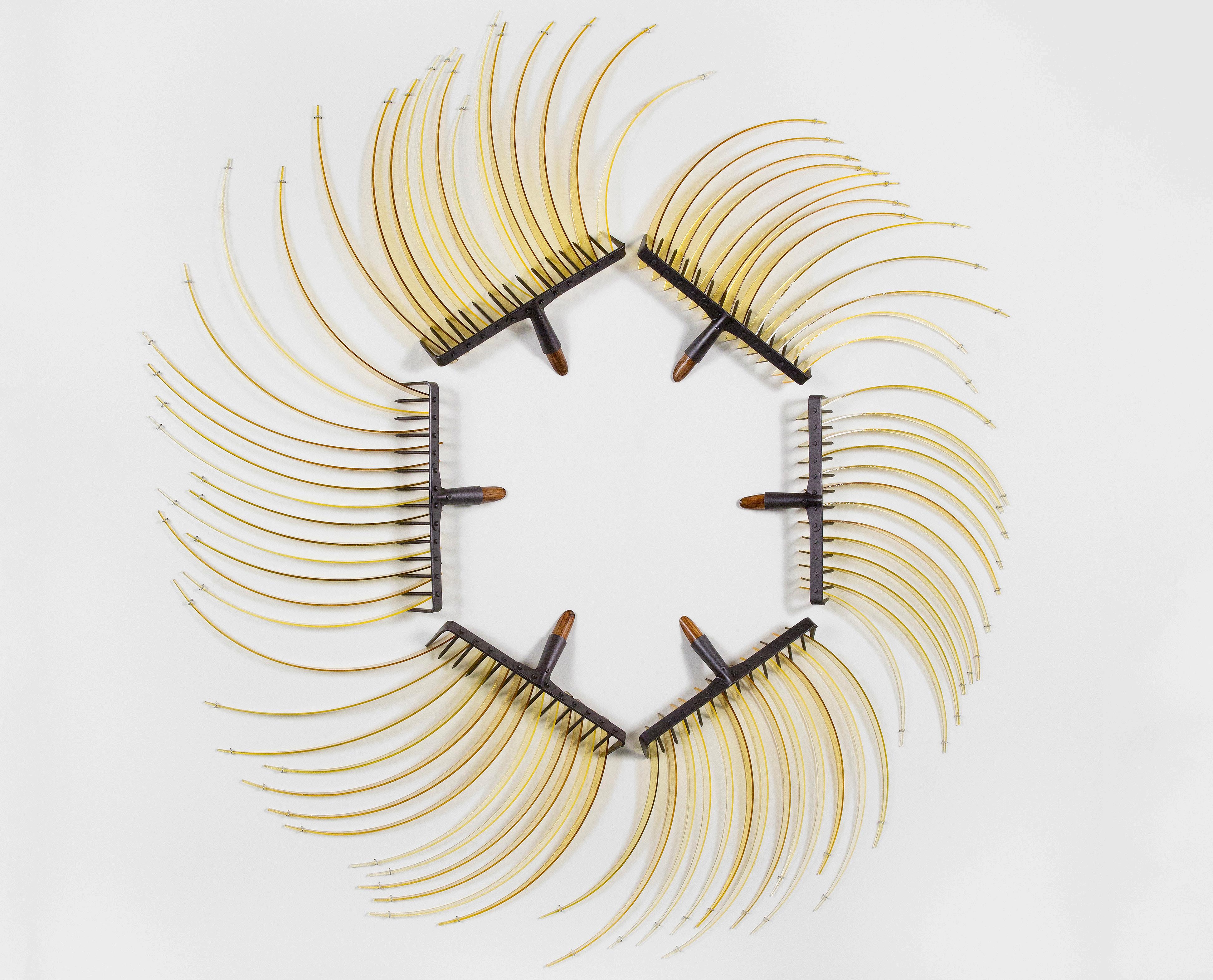
13 minute read
Artist Essay | Kirstie Rea
ARTIST ESSAY
This essay delves into my art practice which is my life by having a closer look at what that is. How and when I end up at the studio and how and why I head away from it. Where I am each day in body and in mind, for making and thinking. In 2017 I celebrated thirty years of my studio in Pialligo, a very small semi-rural orchard suburb on the edge of Canberra.
Over the years I have come to spend more worktime outside of the studio and realise the value of this time towards making. As my research reading has expanded and become daily routine, writing has extended from this. It is a tool I use now to develop ideas.
I write in the mornings – before the sun is up, before the world around me floods my day. It may be for only twenty minutes but my thoughts then are alive with clarity. If this time is broken with radio, phone or food I lose those thoughts – they quickly become crowded out by the sounds of the everyday. As I write words form images for new work.
Words have shape, form and colour beyond their written form.
Threads of the same place, the same season, for the same reason remain as ideas underpinning my work over the past thirty years.
Some tracks I walk just get deeper, some fade, some return, weaving their way back into my sights but not always my footfall. Solitude and silence from the everyday are essential experiences for me to find a voice for thoughts and for filtering and fermenting ideas. Areas to the south and west of Canberra are where I go. Time spent in these areas is my field research. There is a valley inside Namadgi National Park where I breathe deeply.
Gudgenby Valley, in Namadgi National Park is a place I return to, for a frost, for a sunrise, for a few days. Ready Cut cottage in this valley is where I undertook a five week artist residency in 2009 through a wonderful program that Craft ACT Craft and Design Centre run in conjunction with Namadgi National Park.
Gudgenby is a valley of layers of history, of bush and boundaries, of loss and vacancy – of change - it is part of the story of Canberra and beyond. It is a place I have known of and visited since childhood, then and now loving the freedom of a day away.
Reap 2013 kiln formed glass, rake head 160 x 160 x 7 cm
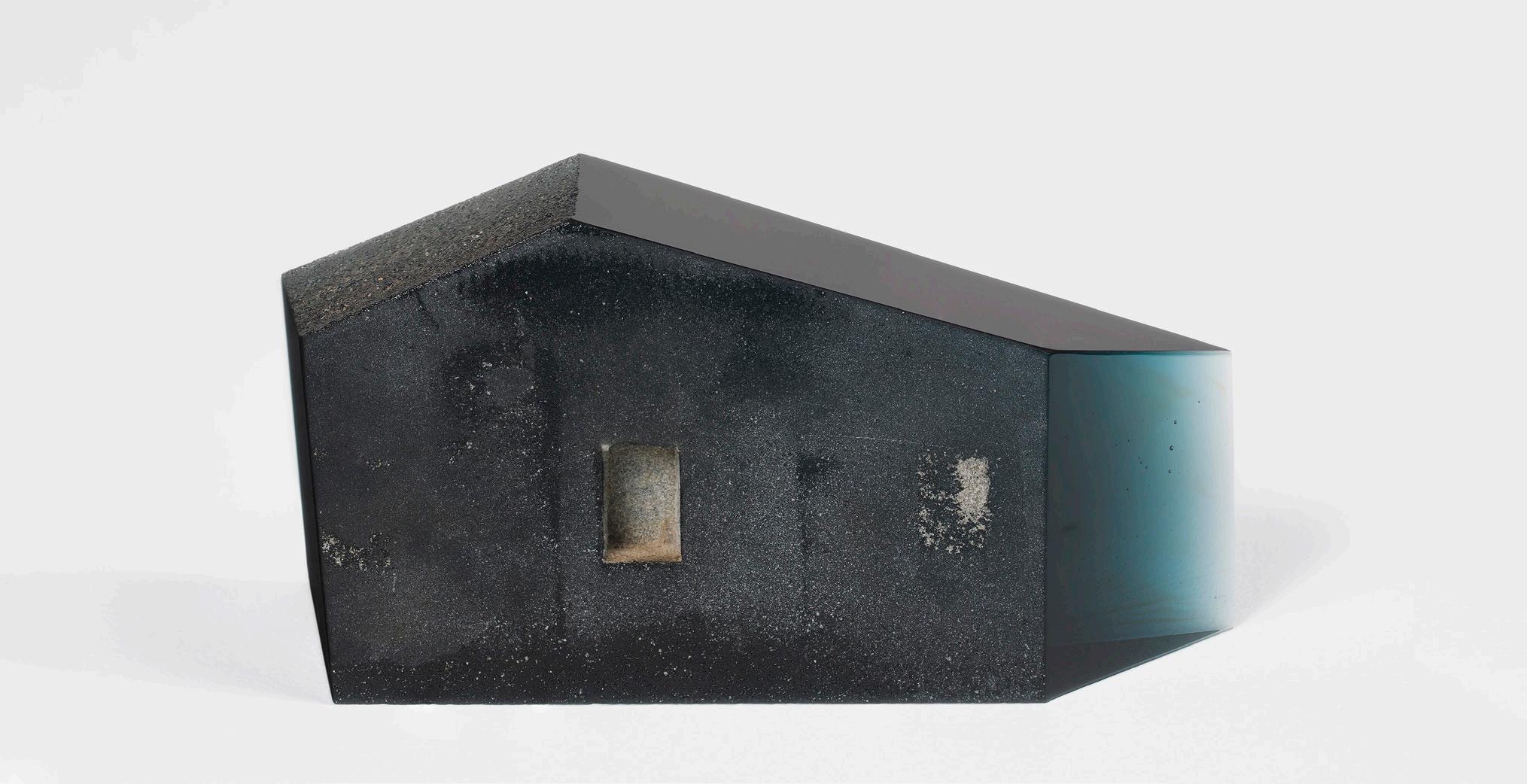
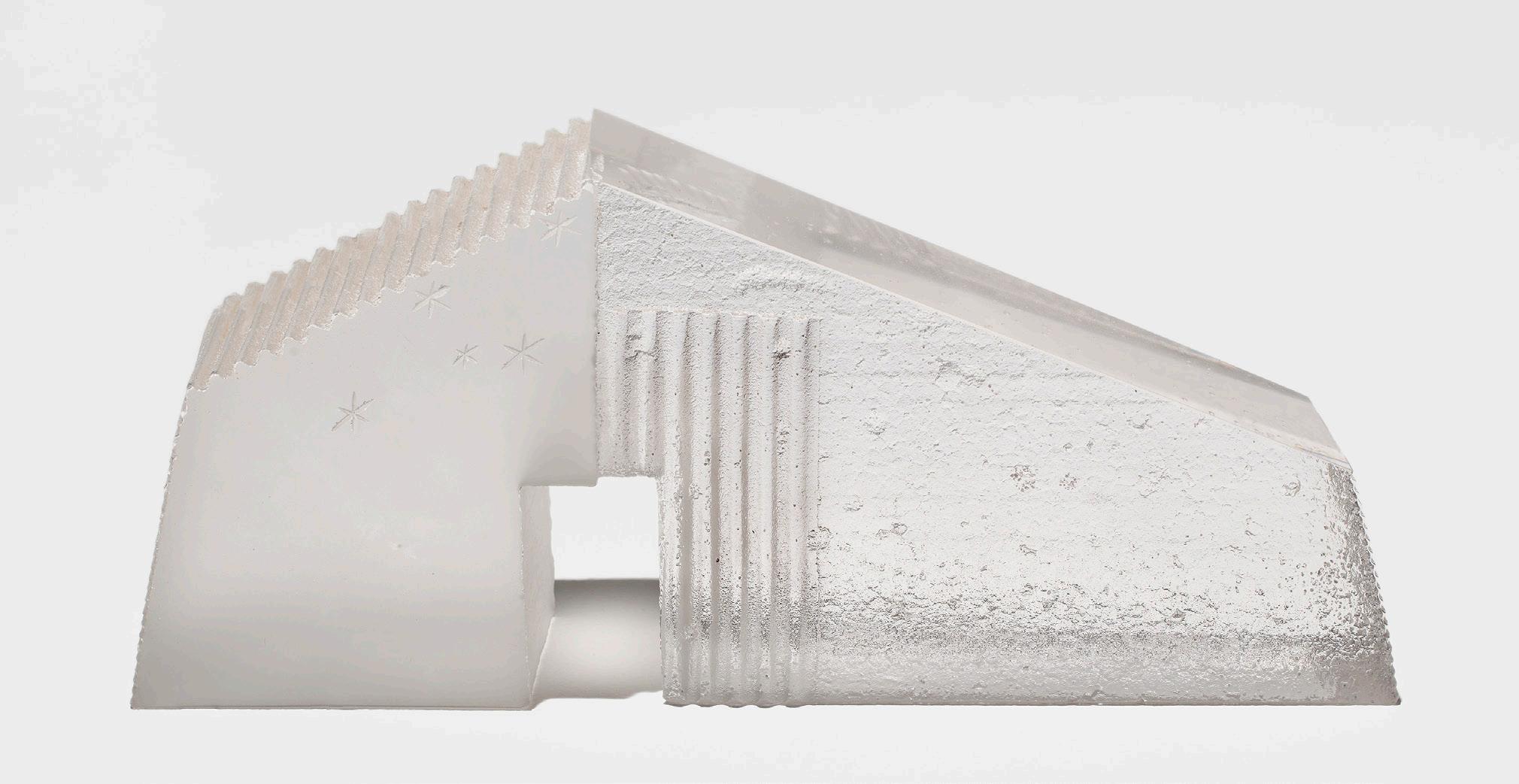
Age and Beauty 1996 hot cast glass, cold worked 11 x 21.5 x 6.5 cm
(top)
Southern Skies 1998 hot cast glass, cold worked 12.5 x 28 x 7cm
Before it is a conscious spectacle, every landscape is a dream-like experience.* But the dreamy landscape is not a frame filled with impresssions, it is a substance which proliferates (une matiére qui foisonne)”
Gaston Bachelard: L’Eau et les Reves, José Corti, Paris, 1991, p.9 (translation: T. Maloon).

Tree Journal 2007 kiln formed, wheel cut glass 87.5 x 31.5 x 6cm
(left)
Winter Gate 2005 kiln formed, engraved glass 23 x 50 x 6 cm
artsACT Art Collection (right)
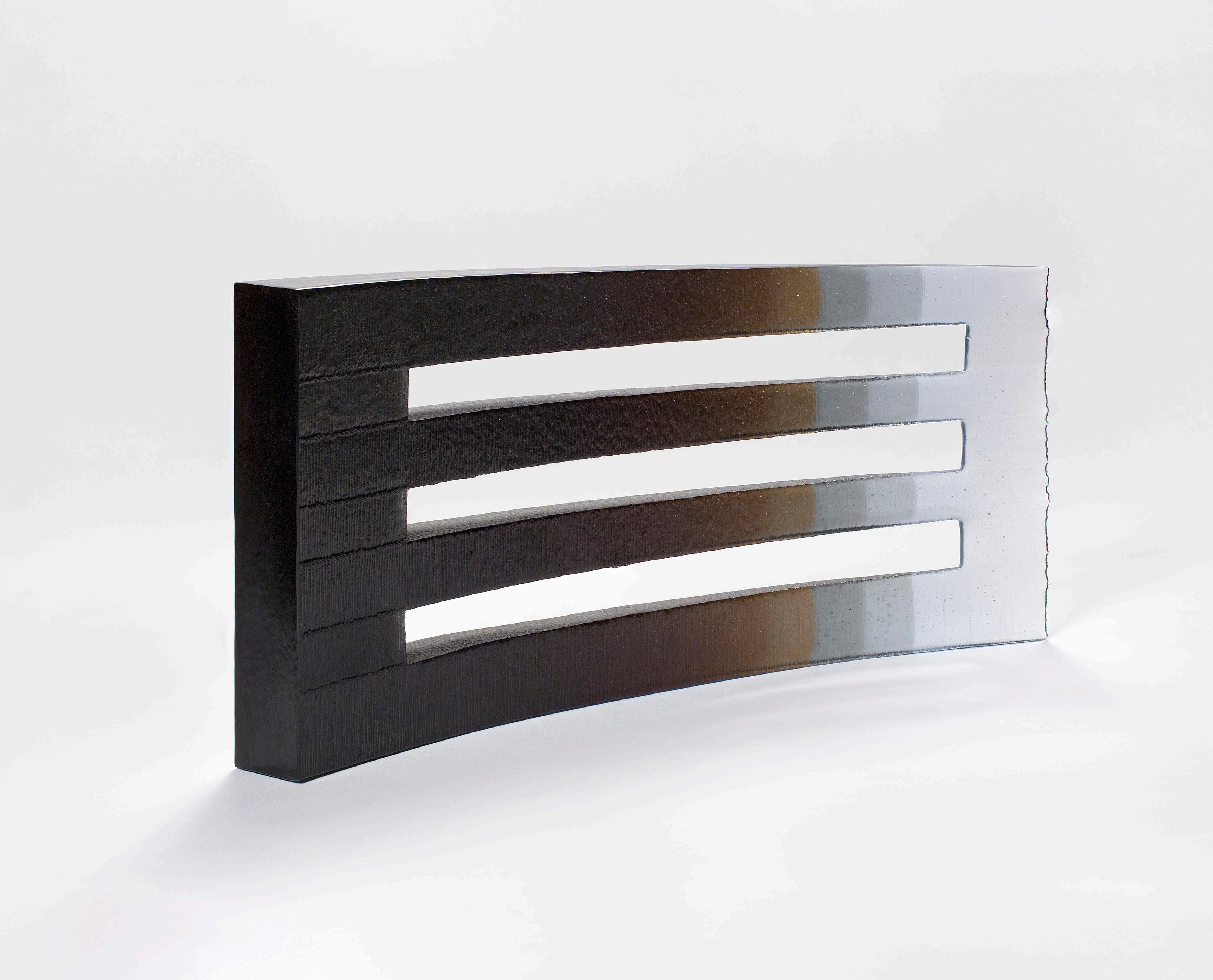
It is also a valley of rock shelters of Aboriginal painting and implements, of dispossession, of dingoes and wild dogs, of second settler farming and now National Park.
It is a place where I attempt to gain an understanding of attachment to place as a non-indigenous Australian.
I go alone, I go with close friends, those with knowledge in areas I am not so versed in. The Gudgenby valley as a place has been extremely important to me in focusing, in slowing down, in no longer setting out for the summit but for exploring the way.
Scottish author and walker, Nan Shepherd in her brilliant little book The Living Mountain (2011) describes not walking up the mountains (being the Cairngorm mountains of Scotland) but walking into the mountains in the same vein as American, John Muir, father of the national park system, stated that “going out… was really going in”.
Concentrating my walking and exploring has not restricted my knowledge but allowed a deepening of it. By focusing in I feel my understanding broaden and encompass so much more.
For a time, I wondered if focusing in like this, may make my seeing and thinking become too narrow, even parochial, but have been persuaded not so whilst reading Robert McFarlane’s (2011) introduction to The Living Mountain where he discusses a view of the Irish poet, Patrick Kavanagh. Parochial is the adjectival form of parish and has come to mean insular, a mind turned inward upon itself. But in earlier times ‘the parish was not a perimeter but an aperture, a space through which the world could be seen… the idea that we learn by scrutiny of the close-at-hand’. I wonder has the Gudgenby Valley become my parish.
Heading back to exploring the Gudgenby valley is also about getting lost. As well as following tracks into a place physically and mentally, getting lost in it is equally important. I believe, as Rebecca Solnit discusses in her book A Field Guide to Getting Lost, that unless we allow our self to get lost we will never discover anything new. Getting lost doesn’t necessarily mean that you will never find your way out, it can be as simple as letting the familiar fall away.
In past times explorers set out for new horizons, they rarely thought of themselves as lost, sure they didn’t know where they were but that was the point of their journey – discovery.
Fresh Ground 2013 kiln formed glass and found tool 165 x 19 x 21 cm
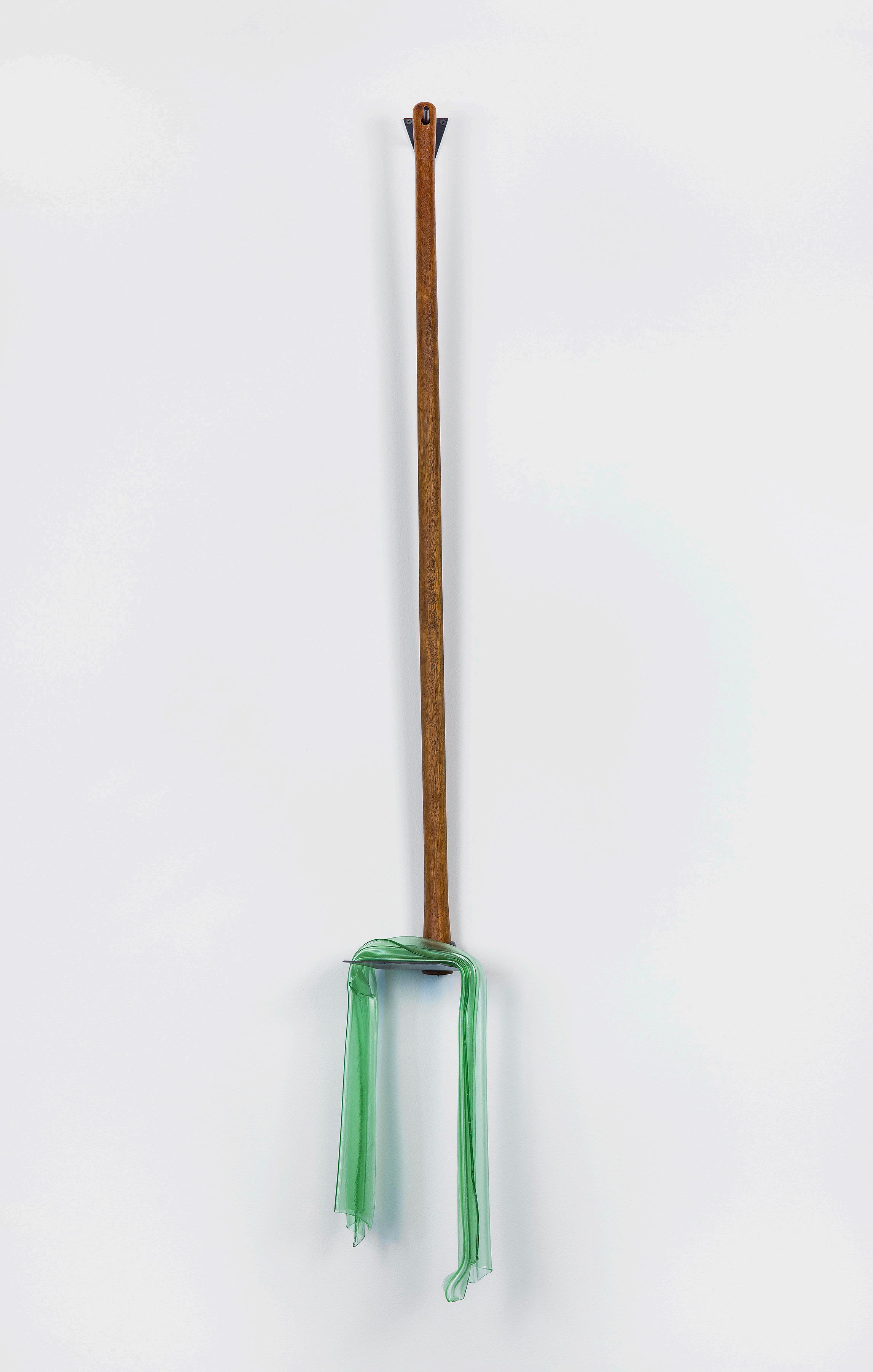
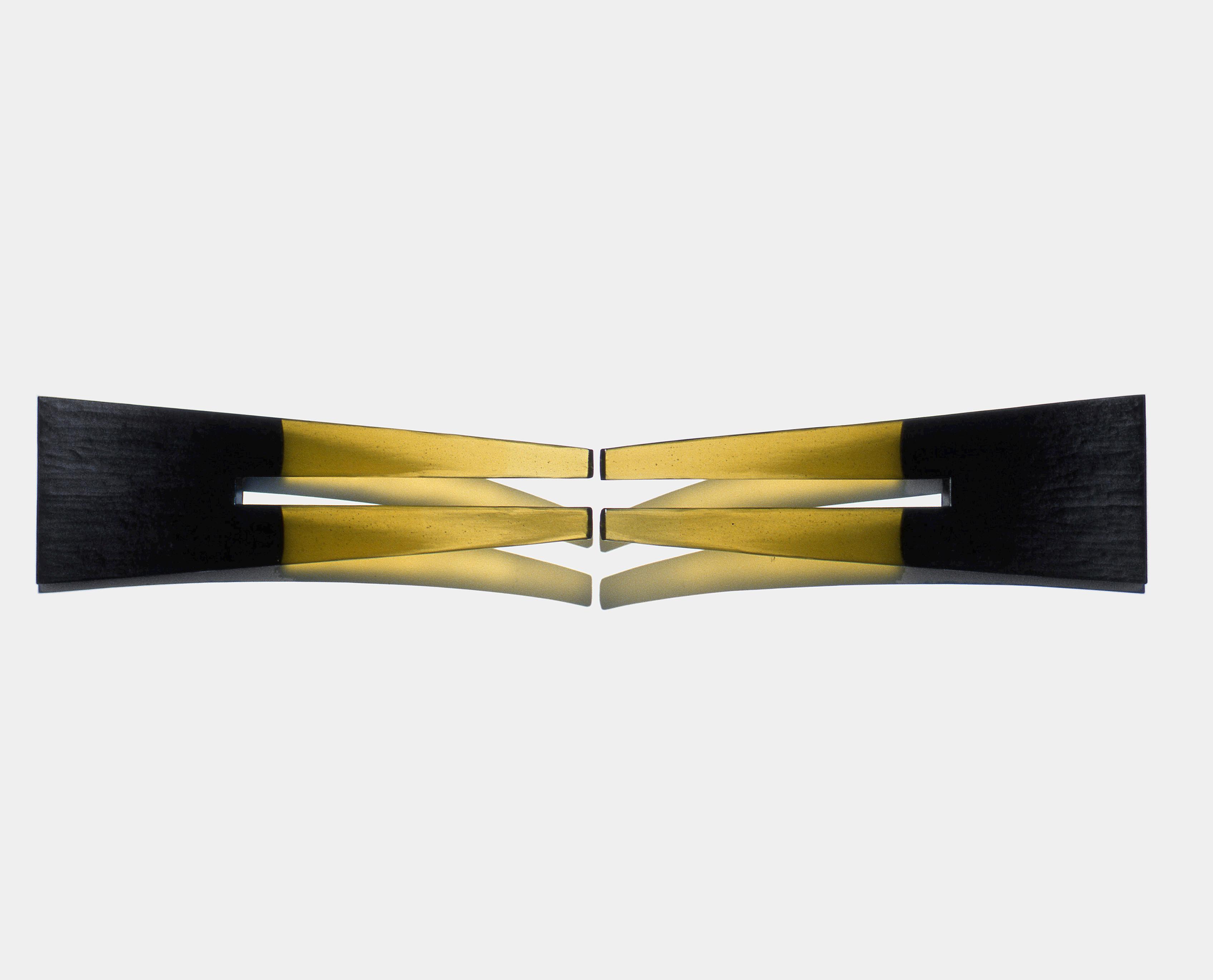
Corral 2004 kiln formed , wheel cut glass 17 x 107 x 16 cm So back to the valley. I could discuss the many incredible things I have seen and the experiences had whilst out there, but I’d like to impart a sense of feeling that the artist residency in 2009 offered, an opportunity to ’stay a while’ in the valley and in turn it encouraged ‘return’.
To ‘stay a while’ – I specifically don’t use the word settle – it is such a colonial word of ownership, fences and gates, tied up with contested landscapes and responsible for rabbits, weeds, erosion, loss of country, loss of habitat. ‘Staying a while’ speaks of history, of layers, of Aboriginal past, of moths, of gathering and moving on and of return.
In 2009 I stayed a while. It was hot, cold, it snowed. Outside I was a sponge, soaking in all I could – by night I wrung that sponge out – I wrote, read and drew, cooked some, filled the hot water bottle and eventually went to bed.
The cottage – I like to think of it as a base not a home – a base – the same cottage kit home as Mawson’s Antarctic Hut, a Hudson’s Ready Cut Cottage – shelter, protection, warmth and isolation.
Getting out there and the freedom of leaving I have always been drawn to places outside the city and I have always loved solitude so my stay in the valley was easy.
Even before I reach the Park boundary things change – the landscape, my thoughts. I’m prepared for out there by the journey there. The soft edge between Canberra and rural ACT, the blur between rural and Park boundary, an old fence, a grid.
The valley comes into view, I descend into it, turn right off the main road, turn right through the gate, park, locate the key, dump bedding on the bed, and open the front door. I am here for a while – outside calls.
Outside and Distance – the lure of distance, the blue of distance, the longing attached to it, the colour of longing. Distance between blue and the golden side of green. I feel there is clarity in distance so I set off in every direction.
And thinking of clarity of sight these days I have to smile as I age – my eyes see clarity in the distance but not in the near – clarity embedded in distance.
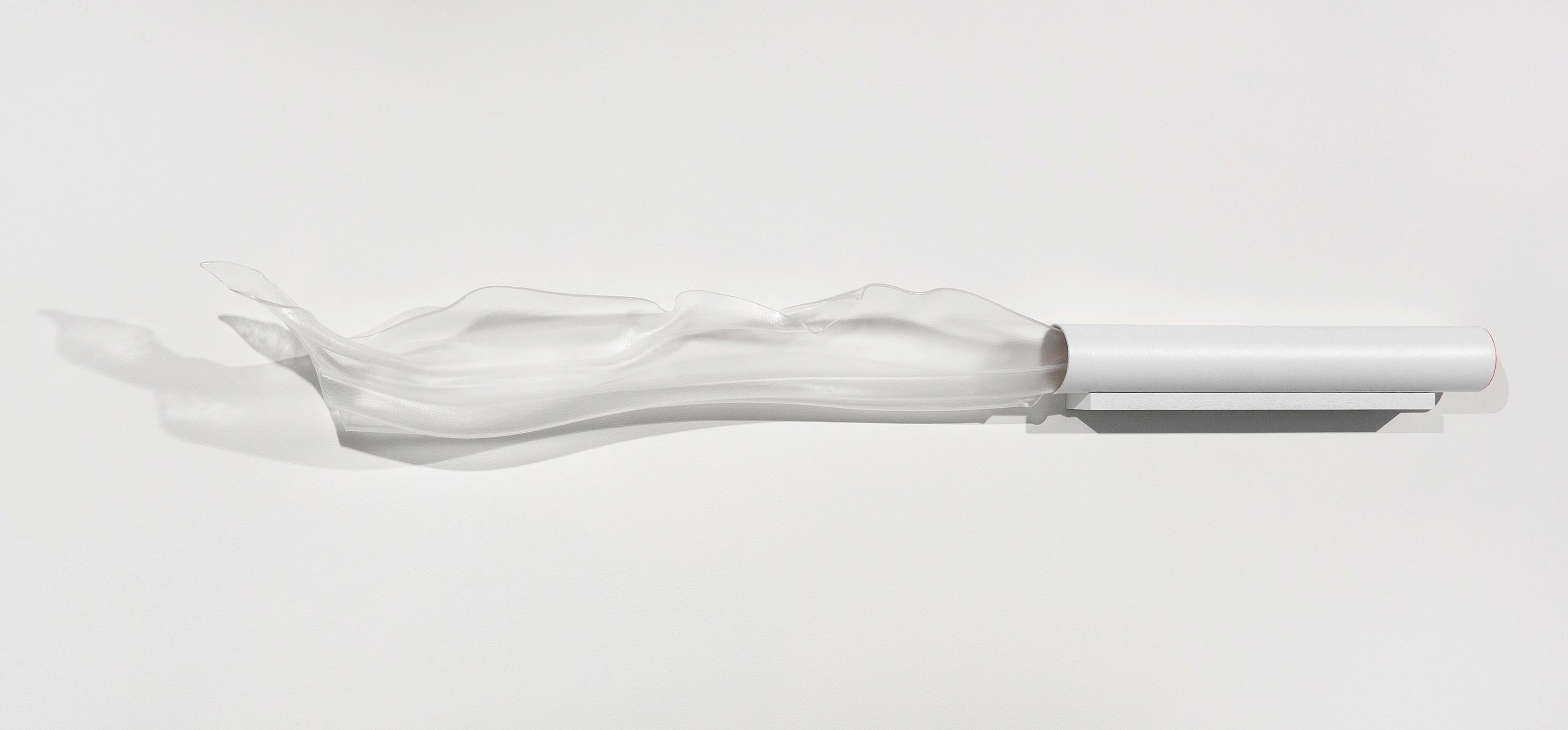
Solitude I’ve sent you the breeze 2015 kiln formed glass, mailing tube 13 x 120.8 x 12 cm
(left)
Paddocks 2013 kiln formed glass, found tools 66 x 265 x 7.5 cm
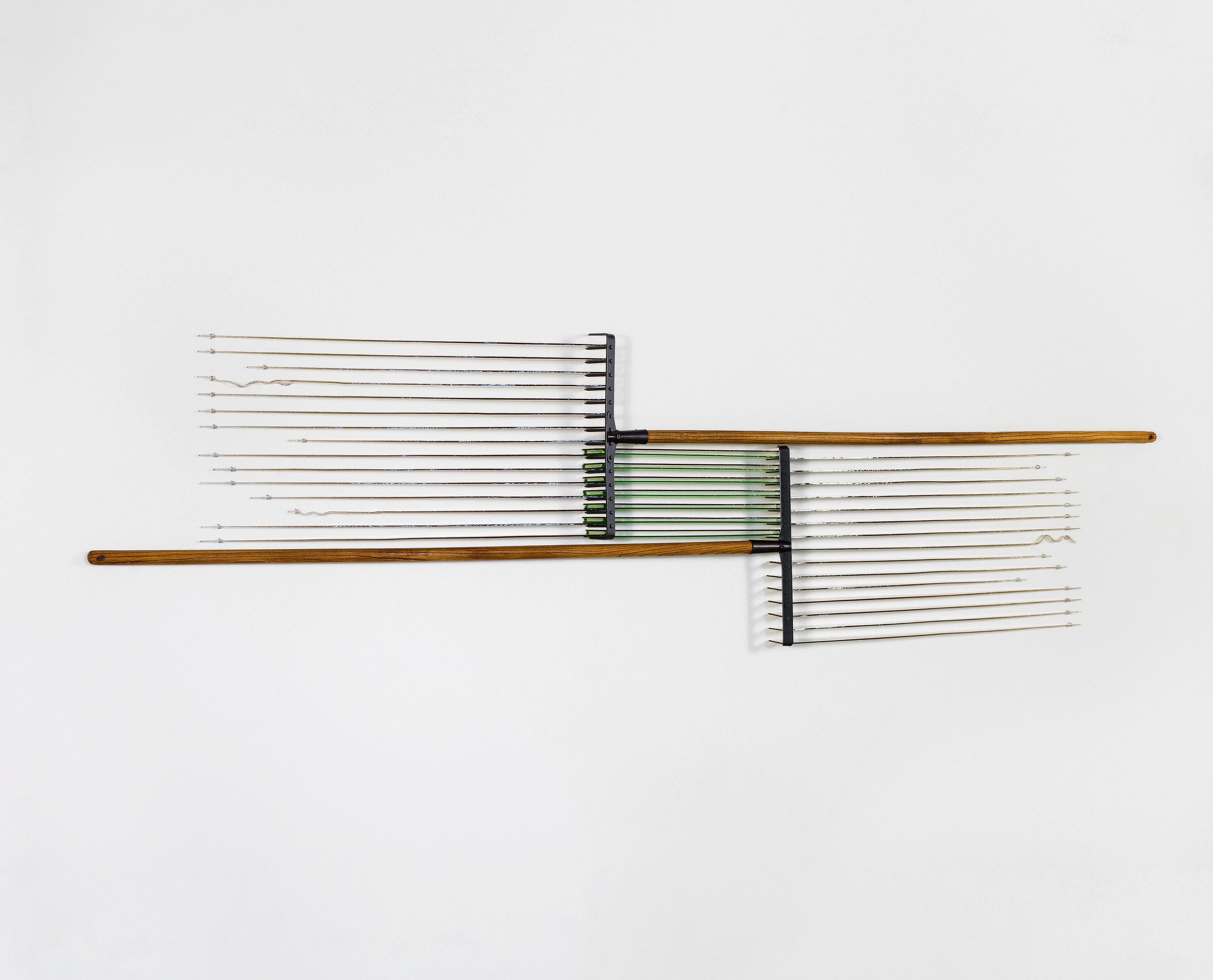

Channell 11 2013 kiln formed glass, found tools 9 x 320 x 37 cm
Jumping forward to April 2015 – a few days in the cottage with friend and print maker, Antonia Aitken. Words from my journal…
Today we walked up and over to Rendezvous Creek Valley. It’s a beautiful long frost hollow valley, stretching into the purple blue distance. It’s so Namadgi – black sallees, boulders and wedgetails circling above.
We walk, hardly talk, following tracks, sometimes animal sometimes vehicle. We have a destination – up the valley – but the way there is important.
I haven’t been up this valley since 1989 – not past the site of Rowely’s Hut – last time we had a break on the steps of the hut. This time on the grass around the burnt remains – bits of skeleton of the hut like the bones of roos lie scattered in the vicinity.
Stopping for the break, sustenance, water, longing sets in – my sights on the distance.
As we sit the beauty of the day is made even more special by the howls of a dingo – the first since being here this time. Antonia records them. The howls are answered from the east.
We probably stay for another hour, I wander, Antonia draws.
Back into Gudgenby Valley – from one view point I feel it is a valley of vacancy and loss, from another it’s a place of return but two things that capture my attention and imagination are changing light and movement. Both signal new experience, made possible by ‘’staying a while’’.
Movement – in an otherwise still landscape – swift mobilisation of the mob can only mean movement from elsewhere. In 2009 that was often dingoes. Stand still, watch, wait. Then there’s the hunt – fast, tiring, brutal.
Later in the day – The hint of a ripple across the surface of the creek – sit still, watch and wait - such an exciting platypus moment - so subtle, quiet and special.
Changing light – it’s morning I head out, sun on my back, my shadow leading the way till midday when I rest and my shadow keeps close company. On the journey home I have circled the valley heading back in the same direction that I left in the morning light. Now my shadow trails me, getting longer, deeper, keen to return with the evening. To ‘stay a while’.
Solitude is important for me. Heading ‘out there’ is not an escape – it’s a place to create distance and allow glimpses into an understanding of my place in it all.
Landscape has a memory of us as we do of it. We carve it, colour it and contour it. We are embedded in landscape as it is in us.
For many years my work has explored intervention and attachment to place. Drawn to places distant from built environments I continue this exploration. Investigating how we have shaped and marked place and in turn how place shapes our navigation both physically and mentally across it and into it, my work brings together the external and the internal of both body and place.
Landscape is not just a skin for form, feature and surface that we so readily attached to a place. Landscape has an inside. Explorations take me deeper under the surface into places and past the seen.
My mind moves with the landscape, the body with the terrain. Tracks and traces left by those who have been before still shape and influence my presence and passage, my comfort or discomfort within that place.
I need the day to fade to start to digest where I have been as I need the sunrise to try and make sense of yesterday, of memory, of tomorrow.
We live under an ocean of air. That ocean has volume, it lives and breathes as we breathe it. It is charged with place, imbued with what lies below, tainted and tinged, tasting of what’s been and what is to come. I ingest it, I digest it, filter and ferment it. That digestion is like a conversation with myself, with my gut, it feeds and nourishes my thinking towards making
Early works in this exhibition have a certain sense of immobility to them, they are anchored to place. The space they occupy and their presence seems now attached only to their footprint.
My recent works have a sense of fluidity to them – that form is still possibly moving, absorbing elements of place, still evolving or dissolving to occupy space.
Making – I have some understanding of what I make but not all the answers to why I make but that is what keeps me making, getting out there, researching, reading and creating.
The more I know and understand my materials for making the more I feel I can put certain qualities of them aside for another time for another idea.
Time ‘in the field’ is crucial for me to gain enough clarity to return to the studio and make, otherwise glass as a material and the processes attached to it can clutter studio time.
Distance is interesting as it can be looking forward or looking back. Distance looking back allows a deeper understanding from that perspective. Looking forward it is often the distance of blue, of longing, of the unknown, that author Rebecca Solnit so eloquently writes about.
Returning and change I am a local (to the Canberra region), I have travelled and I have returned and always look forward to my return. Why? When and how do we believe in belonging – can we belong somewhere and if so how?
Places change – we change – what I am returning to changes.
I can enjoy, feel comfortable, can return to and linger in places that I don’t belong to. These are important experiences to help me figure out why I feel attached to other places.
Have places such as state and national parks enabled attachment to a degree as they have made place publically available, accessible and therefore knowable where that attachment becomes possible.
Looking back, I can now reflect on being shown these places and their value, their differences and distances as a child. It has instilled in me an ongoing inquiry, an appreciation of these places that is supported by a deeper understanding of them. I continue to build and deepen connections to these places. I see my practice now as balancing time between being in and out of the studio and finding a balance between reading, writing and making.
After forty years of working as an artist do I have answers for how and why make – no but that’s the exciting thing. Not having all the answers technically, conceptually or about the material glass is what keeps me making.
Kirstie Rea October 2018
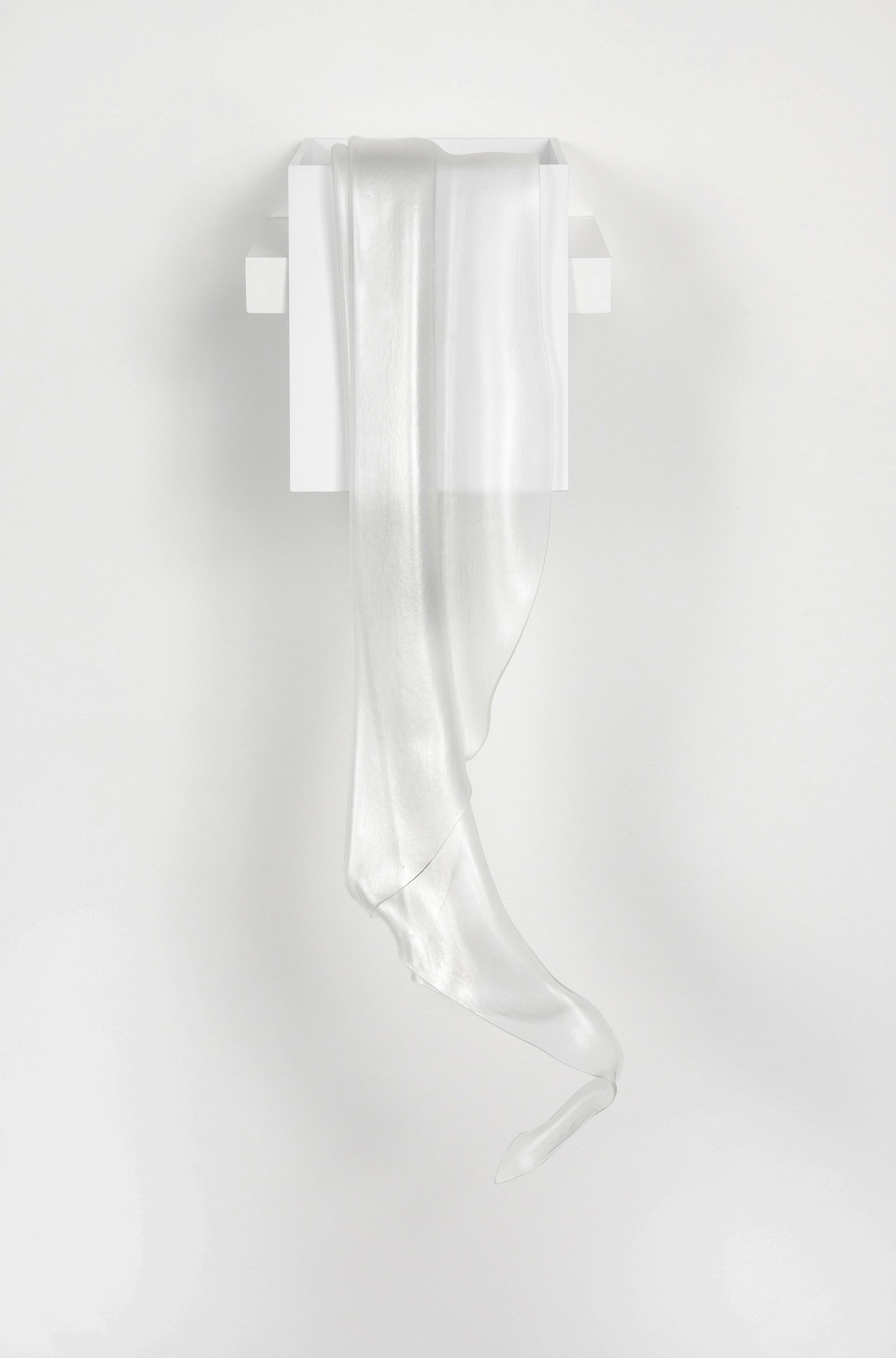
The freedom of solitude – caught by the breeze 2015 kiln formed glass, painted MDF box form 70 x 25 x 30 cm
(left)
Another Day 2012 kiln formed glass, shelf 11 x 50 x 19 cm






